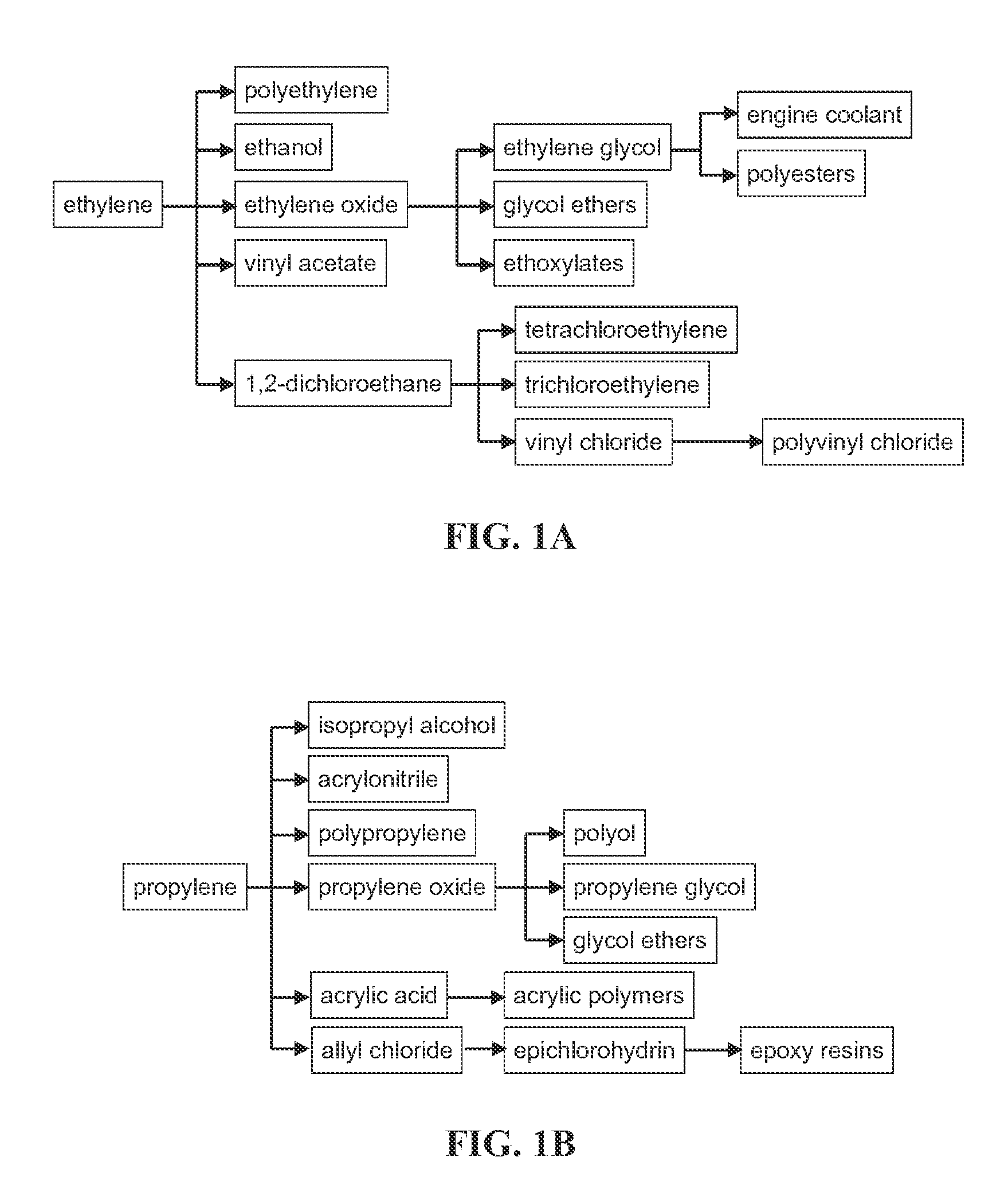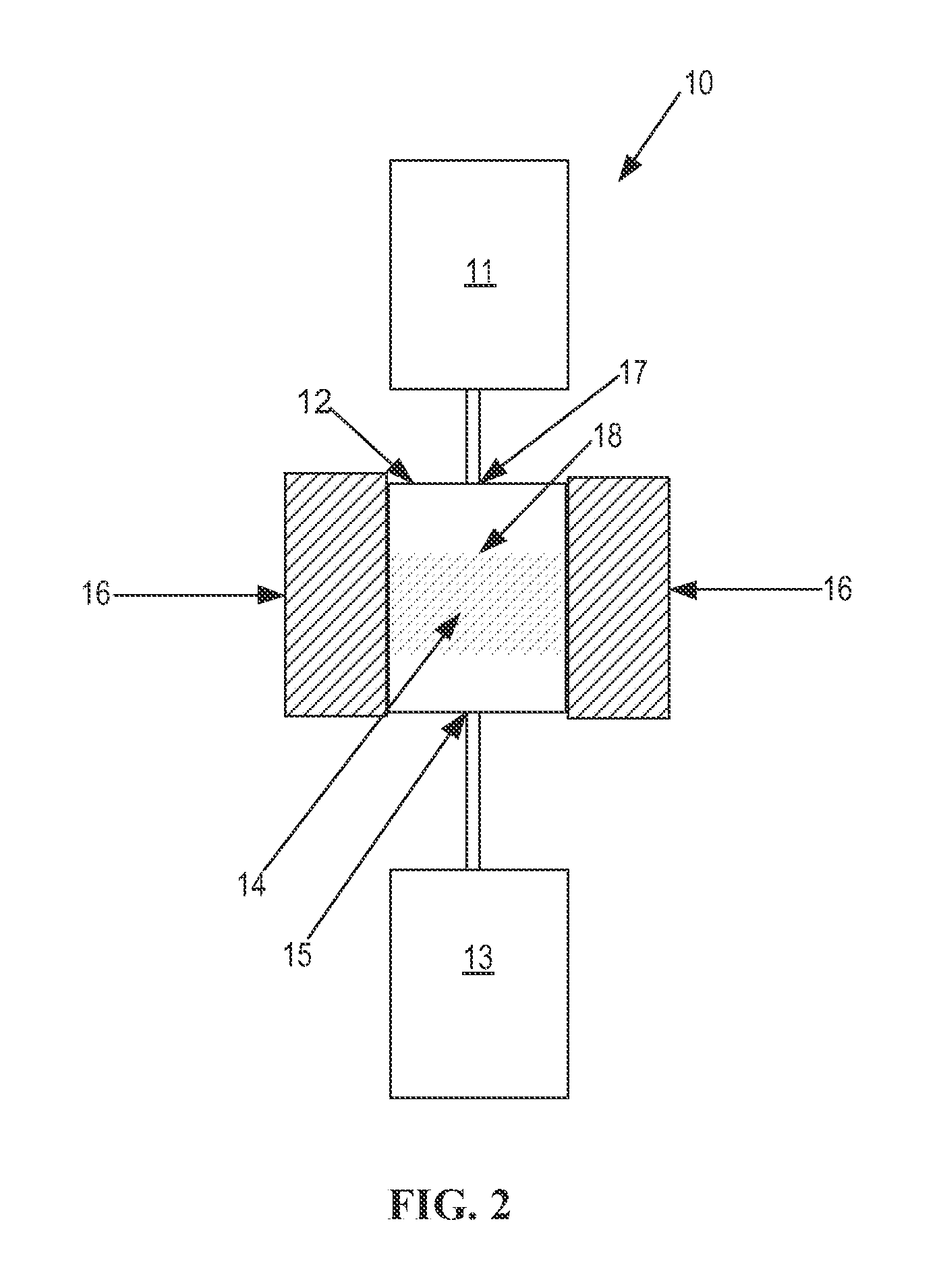Stable silicoaluminophosphate catalysts for conversion of alkyl halides to olefins
a technology of silicoaluminophosphate and alkyl halide, which is applied in the direction of hydrocarbon preparation catalysts, physical/chemical process catalysts, bulk chemical production, etc., can solve the problems of inefficient plant operation, lack of stable catalytic performance over prolonged periods of use for alkyl halide conversion, and catalyst deactivation rapidity, etc. , to achieve the effect of reducing the silica content of sapo, rapid catalyst deactivation
- Summary
- Abstract
- Description
- Claims
- Application Information
AI Technical Summary
Benefits of technology
Problems solved by technology
Method used
Image
Examples
examples
[0059]The present invention will be described in greater detail by way of specific examples. The following examples are offered for illustrative purposes only, and are not intended to limit the invention in any manner. Those of skill in the art will readily recognize a variety of noncritical parameters which can be changed or modified to yield essentially the same results. The materials used in the following examples are described in Table 2, and were used as-described unless specifically stated otherwise.
[0060]
TABLE 2MaterialSourceSAPO-34 (powder form)aACS MaterialColloidal Silica (Ludox SM-30)Sigma-AldrichAluminum iso-propoxide (Al(O—i-Pr)3)Sigma-AldrichPhosphoric acid (H3PO4 (85 wt % in aqueous))Sigma AldrichHydrochloric acid (HCl)Sigma-AldrichTetraethylammonium hydroxide ((C2H5)4N(OH))Sigma AldrichWater (deionized)SABIC labsaSAPO-34 obtained from ACS Material, Medford, MA, USA.
Comparative Catalyst
[0061]Catalyst A.
[0062]A SAPO-34 powder was obtained from a commercial source (ACS ...
example catalyst
[0063]Catalyst B.
[0064]A mixture was prepared by adding 13.65 g aluminum isopropoxide to 18.15 g water in a Teflon liner, stirred at 60° C. in a hot water bath for 2 h. The isopropoxide mixture was cooled to room temperature and a mixture of phosphoric acid and hydrochloric acid (5.49 g H3PO4 and 1.55 g HCl) was added dropwise while stirring. Silica gel (4.00 g Ludox SM-30) was added to the mixture while stirring and 28.12 g tetraethylammonium hydroxide was slowly added while vigorously stirred. The gel mixture was aged overnight at room temperature without stirring. The gel was heated at 215° C. for 99 h in static autoclave. The formed SAPO material was separated and washed with water, and dried at 90° C. overnight. The material was sieved through 40 mesh screen and calcined in air at 600° C. for 2 h.
[0065]Catalyst C.
[0066]A mixture was prepared by adding 13.60 g of aluminum isopropoxide to 18.16 g of deionized water in a 125 mL plastic bottle and stirred at room temperature for 19...
PUM
| Property | Measurement | Unit |
|---|---|---|
| wt. % | aaaaa | aaaaa |
| wt. % | aaaaa | aaaaa |
| particle size | aaaaa | aaaaa |
Abstract
Description
Claims
Application Information
 Login to View More
Login to View More - R&D
- Intellectual Property
- Life Sciences
- Materials
- Tech Scout
- Unparalleled Data Quality
- Higher Quality Content
- 60% Fewer Hallucinations
Browse by: Latest US Patents, China's latest patents, Technical Efficacy Thesaurus, Application Domain, Technology Topic, Popular Technical Reports.
© 2025 PatSnap. All rights reserved.Legal|Privacy policy|Modern Slavery Act Transparency Statement|Sitemap|About US| Contact US: help@patsnap.com



